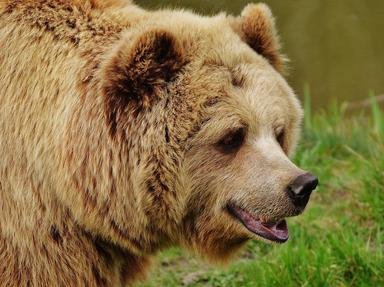Quiz Answer Key and Fun Facts
1. Which is one of the few habitats where you won't find any bears?
2. How many bear species are there (also including the panda bear)?
3. Which of these once widespread bear species is now extinct?
4. The Kodiak bear, considered by some the largest bear (and in this respect the largest living land predator) is a subspecies of which bear species?
5. Where does the polar bear live?
6. Considering their food habits, which is the group that most bears belong to?
7. Which of these species was not threatened in 2004, according to the "IUCN Red List of threatened species"?
8. Which of the following facts is NOT true regarding bear behavior?
9. Which of these is NOT a recommended thing to do when you come face to face with a bear?
10. In which culture was the bear the symbol of the warrior caste - "artos"?
Source: Author
Mr5
This quiz was reviewed by FunTrivia editor
crisw before going online.
Any errors found in FunTrivia content are routinely corrected through our feedback system.


